Walckenaeria tibialis is a species of dwarf spider in the family Linyphiidae. It is found in the United States and Canada.
Xestocoris is a genus of dirt-colored seed bugs in the family Rhyparochromidae. There are about six described species in Xestocoris.
Xestoleptura tibialis is a species of flower longhorn in the beetle family Cerambycidae. It is found in North America.

Microtomus is a genus of assassin bugs in the family Reduviidae. There are about 10 described species in Microtomus.
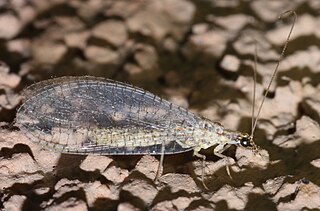
Eremochrysa tibialis is a species of green lacewing in the family Chrysopidae.

Parchicola tibialis is a species of flea beetle in the family Chrysomelidae. It is found in North America.
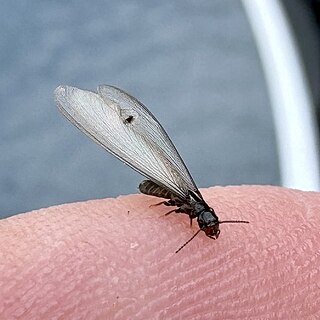
Reticulitermes hesperus, the western subterranean termite, is a species of termite in the family Rhinotermitidae. It is found in Central America and North America. R. hesperus is native to the coast between British Columbia and Southern California. Like other subterranean termites, they live underground, where they have elaborate eusocial societies composed of a queen, workers, and soldiers, as well as a rotating case of sexually reproductive adults and their larval and immature offspring. The reproductive adults are the only ones with functional wings. The reproductive adults will swarm on warm days in spring and fall, particularly after a rain event, looking for mating partners. These termites prefer moist living environments and prefer to consume wood that has already been partially decayed by saprotrophic fungus.
Trichaltica tibialis is a species of flea beetle in the family Chrysomelidae.

Psilocurus is a genus of robber flies in the family of Asilidae. There are about 14 described species in Psilocurus.
Pilophorus tibialis is a species of plant bug in the family Miridae. It is found in Central America and North America.

Scirtes is a genus of marsh beetles in the family Scirtidae. There are more than 80 described species in Scirtes.
Scirtes plagiatus is a species of marsh beetle in the family Scirtidae. It is found in North America.
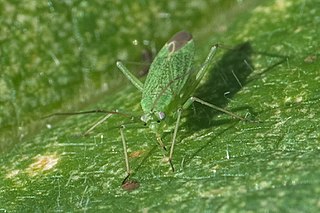
Brooksetta is a North American genus of plant bugs in the family Miridae. There are about 13 described species in Brooksetta.

Ephemerella tibialis is a species of spiny crawler mayfly in the family Ephemerellidae. It is found in North America.

Phytocoris tibialis is a species of plant bug in the family Miridae. It is found in the Caribbean Sea, Central America, and North America.
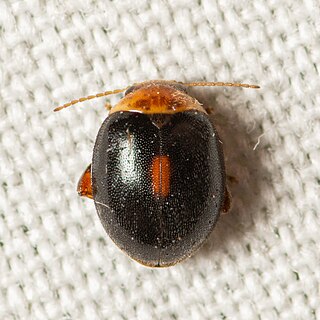
Scirtes orbiculatus is a species of marsh beetle in the family Scirtidae. It is found in North America.
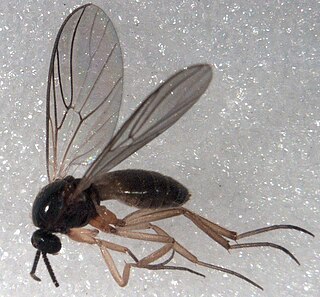
Mycetobia is a genus of wood gnats in the family Anisopodidae. There are more than 20 described species in Mycetobia.
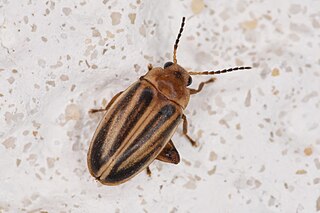
Scirtes oblongus is a species of marsh beetle in the family Scirtidae. It is found in North America.
Cremastocheilus schaumii is a species of scarab beetle in the family Scarabaeidae.

Xenorhynchopsis is an extinct genus of flamingo from the Pliocene to Pleistocene Lake Eyre basin of Australia. Initially described as species of stork, the two known Xenorhynchopsis species are vastly different in size. X. minor is the older and small of the two species, ranging from the Pliocene to Pleistocene and being described as having reached a size smaller than that of the lesser flamingo. X. tibialis meanwhile appears to have been restricted to Pleistocene strata and was notably bigger, being counted as one of the biggest known flamingos in the fossil record.













